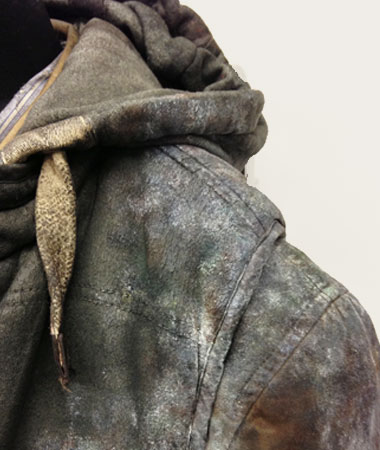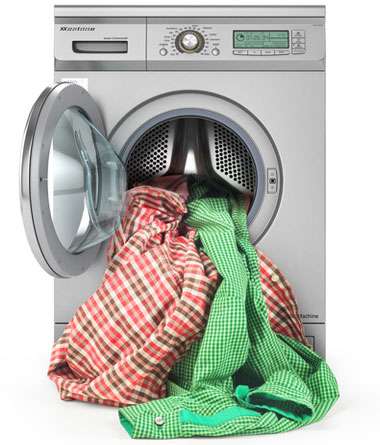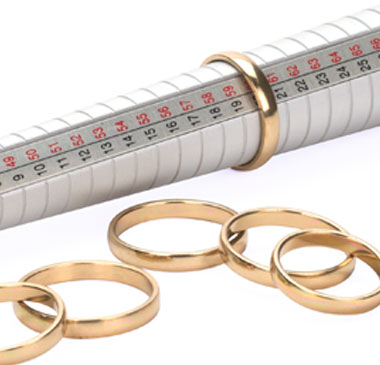Rit ProLine Universal Textile Dye - Dyeing Instructions
PREPARATION
1. Choose the material to be dyed: Rit Proline dyes cotton, linen, viscose, silk, wool, nylon, polyester, acrylic, acetate and some plastics.
Not recommended for fabrics with a rubber coating or for fabrics that may only be treated with cold water wash or dry cleaning.
May not be effective on fabrics damaged by bleach.
2. Dye out the original colour in advance (if needed). If you are dyeing a fabric to a lighter or different colour, use the Color Remover before dyeing to lighten the existing colour.
Rit Color Remover can only be used on cotton, linen, viscose, silk and nylon. Do not use bleach to remove colour.
3. Pre-wash the fabric to remove any finishes (finishes) or stains.
4. Prepare dye liquor:
For each pound of dry fabric, use 2 full scoops of dye. To achieve a darker or more intense colour, double the amount of dye.
Dissolve the dye powder completely in 2 cups of the hottest water suitable for the material.
5. Choose a dyeing method. For simple dyeing projects, use the sink/bucket method.
If you want to achieve a deeper colour or dye synthetic materials (e.g. acrylic, acetate, nylon or fabrics with more than 35% polyester), use the stove top method.
SINK / BUCKET METHOD
1. Put on rubber gloves.
2. Fill a plastic bucket or stainless steel sink with the hottest water suitable for the material.
Use 3.5 litres of water for each pound of material. Ideally, the water temperature should be at least 60°C.
If the tap water is not hot enough, heat some water on the cooker or in the microwave and add it to the dye bath.Make sure there is enough water to allow the fabric to move freely.
3. Add the pre-dissolved dye solution to the hot water and stir well.
4. For best results, add 1 cup of salt to the dye bath for cotton, viscose or linen. For nylon, silk or wool, add 1 cup vinegar to the dye bath.
5. Add 1 teaspoon liquid dishwashing detergent or Synthrapol .
6. Optional: To check the colour, dip a paper towel into the dye bath. If the colour is too light, add more dye; if the colour is too dark, add more water.
The final colour result depends on the type of material, the amount of dye used, the water temperature and the time in the dye bath.
7. When dyeing fabric, unfold it and make it wet. Immerse the fabric in the dye bath.
8. Stir constantly for at least 30 minutes or until the desired depth of colour is achieved (up to 60 minutes). The fabric will look darker when wet and before washing.
STOVE TOP METHOD
1. Put on rubber gloves.
2. Fill a stainless steel pot with enough water to allow the material to move freely. Use 3.5 litres of water for every pound of material.
3. Add the pre-dissolved dye solution to the water and mix well.
4. For best results, add 1 cup of salt to the dye bath for cotton, viscose or linen, 1 cup of vinegar for nylon, silk or wool.
5. Add 1 teaspoon of liquid dishwashing detergent or Synthrapol.
6. Heat dye bath to just below boiling point.
7. The final colour result depends on the type of material, the amount of dye used, the water temperature and the time in the dye bath.
Optional: When dyeing natural fabrics (e.g. cotton, linen, viscose, silk or wool) check the colour by dipping a paper towel into the dye bath.
If the colour is too light, add more dye; if the colour is too dark, add more water.
8. When dyeing fabric, unfold it and make it wet. Immerse fabric in the bath.
9. Maintain temperature for the duration of dyeing
10. Stir constantly for at least 30 minutes or until desired depth of colour is achieved (up to 60 minutes). The material will look darker when wet and before washing.
After dyeing
Use Rit ColorStay Dye Fixative immediately after dyeing to maximise colour retention and reduce bleeding.
Rinse with cold water until the rinse water begins to run clear.
Wash in warm water with mild detergent by hand or in the washing machine with an old towel.
Caution
• Contains salt. May be irritating to eyes or skin. Do not get in eyes, on skin or clothing.
• FIRST AID: If swallowed, call poison control or doctor immediately. Do not induce vomiting. If in eyes or on skin, flush with water for 15 minutes.
Complies with ASTM D-4236 *)
Non-toxic. Harmless to sewage and wastewater treatment plants.
*) ASTM D-4236 means our paints are completely non-toxic. They have been fully tested and found to be non-toxic and non-harmful.
 We ship worldwide
We ship worldwide Top customer satisfaction!
Top customer satisfaction! Many payment options
Many payment options






